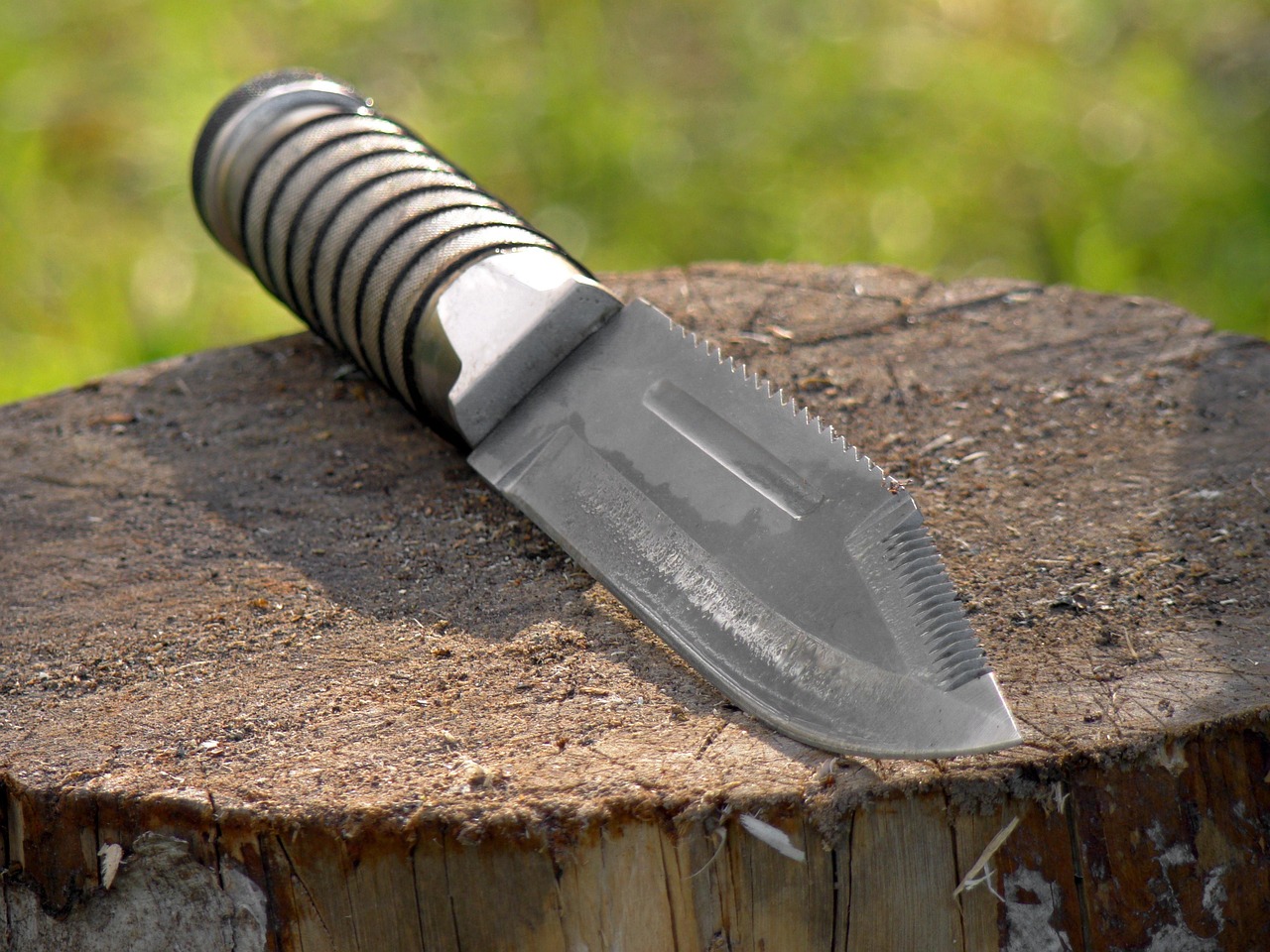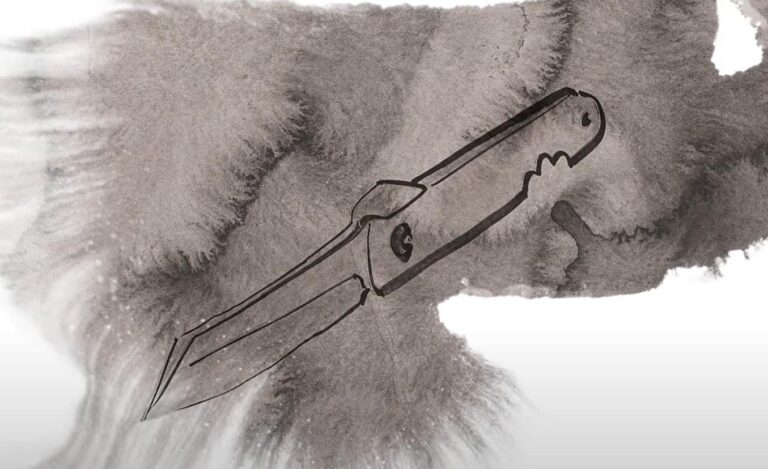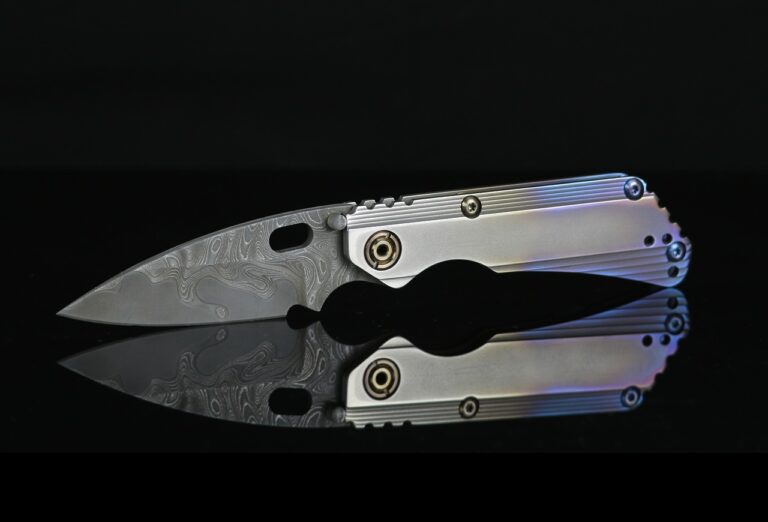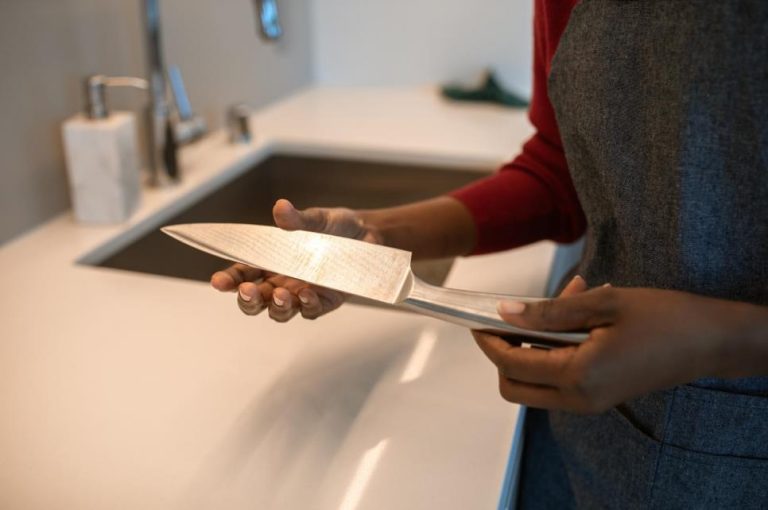Hunting knives are the unsung heroes of the outdoors—more than just sharp blades, they’re tools that turn hunts into successes, whether field-dressing a deer, skinning small game, or prepping camp meals. Unlike everyday pocket knives, they’re built tough: durable steel, ergonomic grips, and designs honed for the rigors of the wild.
For centuries, hunters relied on handcrafted knives to survive; today, they’re a $2.3 billion global market (Outdoor Industry Report, 2024), with options for every skill level and budget. But for your business—whether you’re a wholesaler, distributor, or retailer—this variety can feel overwhelming. If you’re looking for the right blade and building a catalog that sells, understanding the core types of hunting knives is the first step. Let’s break down the most common types, how to choose them, and how to use them effectively.
What Is a Hunting Knife?
A hunting knife is a specialized tool designed for post-hunt game processing, including skinning, gutting, and butchering. It’s also a versatile outdoor companion for tasks like cutting rope, preparing food, or handling camp chores.
- Core Designs: Most hunting knives are either fixed-blade (sturdy, no moving parts) or folding (compact, easy to carry).
- Blade Length: Typically 3–6 inches, balancing precision for small tasks and strength for large game.
- Key Features: Blades are made from durable steel (stainless or carbon) to retain sharpness, with handles designed for a secure grip—even when wet or bloody.
Common subtypes include:
- Skinning knife: Removes hides cleanly.
- Boning knife: Separates meat from bones.
- Caping knife: Trims delicate trophy details (e.g., deer faces).
Buy Wholesale Knives and Start Scaling up with Us Today
Contact us and connect with a sales rep to get a free quote.
Key Parts of a Hunting Knife: How They Impact Performance
Every component of a hunting knife plays a role in its functionality. Here’s what to look for:
Blade
The blade is the workhorse, with material and shape dictating performance:
| Material | Benefits | Best For |
|---|---|---|
| Stainless Steel | Rust-resistant, low maintenance | General hunting, wet environments (e.g., rain, river crossings). |
| Carbon Steel | Sharper edge retention, easier to sharpen | Heavy tasks (field dressing, bone cutting). |
Blade length (3–6 inches) and shape (e.g., drop point, clip point) also define use cases.
Edge & Point
- Edge: Smooth edges excel at slicing; serrated edges tackle tough materials (e.g., thick hide, rope).
- Point: Drop points are strong and versatile for skinning; clip points have a thin tip for precision work (e.g., caping).
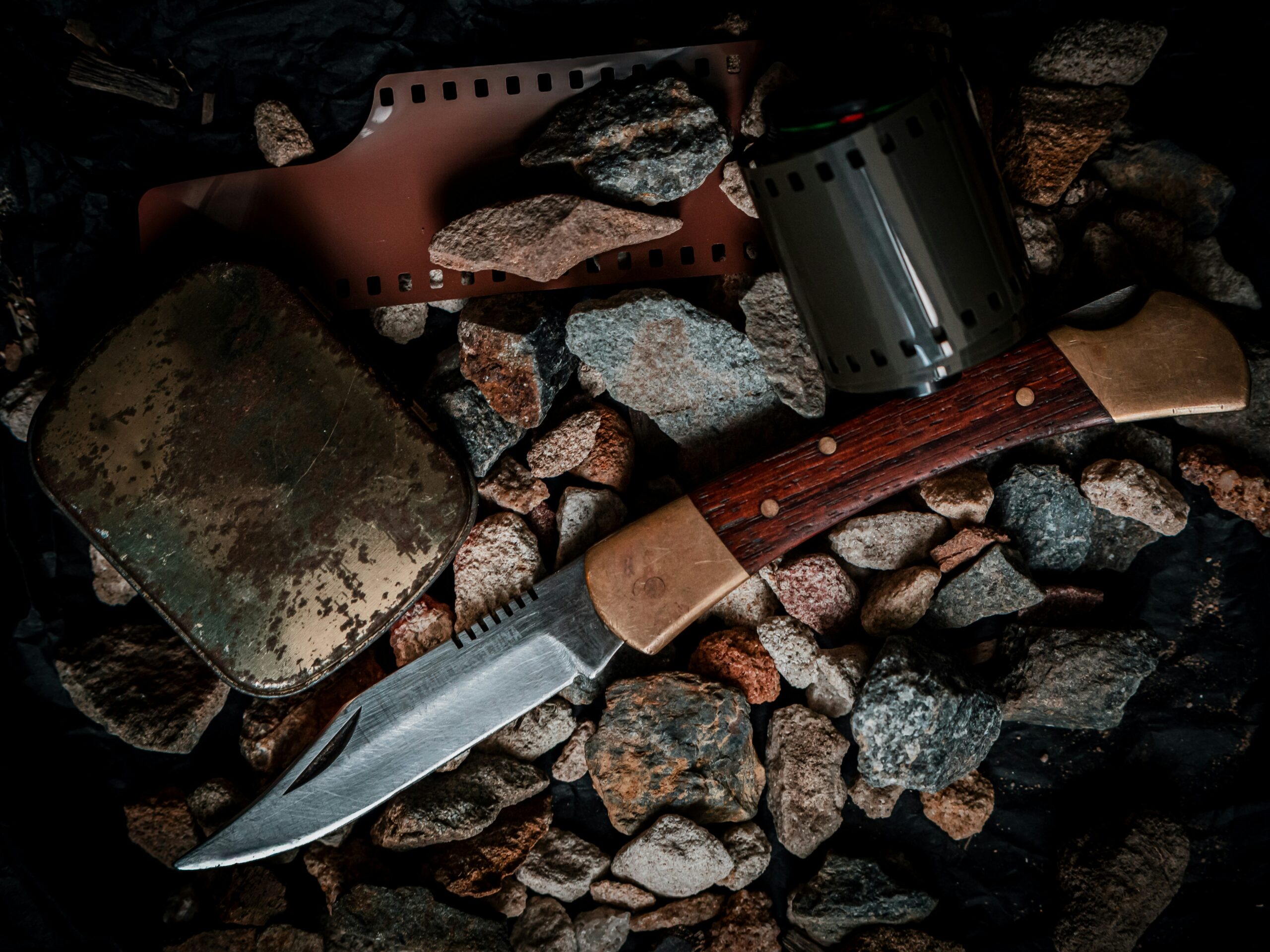
Tang
The tang connects the blade to the handle. A full tang (metal runs through the entire handle) ensures strength and balance—critical for heavy use.
Handle
Handles impact grip and comfort:
- Materials: Rubber or textured plastic for non-slip grip (ideal for wet conditions); wood for aesthetics (but may be slippery).
- Features: Look for ergonomic shapes and durable materials to reduce hand fatigue during long use.
Buy Wholesale Knives and Start Scaling up with Us Today
Contact us and connect with a sales rep to get a free quote.
Types of Hunting Knives: Which One Fits Your Needs?
1. Fixed-Blade Hunting Knives
- Design: No moving parts; full tang construction for maximum strength.
- Best For: Field dressing large game (deer, elk), cutting bone, or heavy outdoor tasks.
- Blade Length: 3–6 inches (Bowie knives, a popular subtype, range 6–12 inches for big game).
- Why Choose: Easy to clean, durable, and reliable for tough conditions.
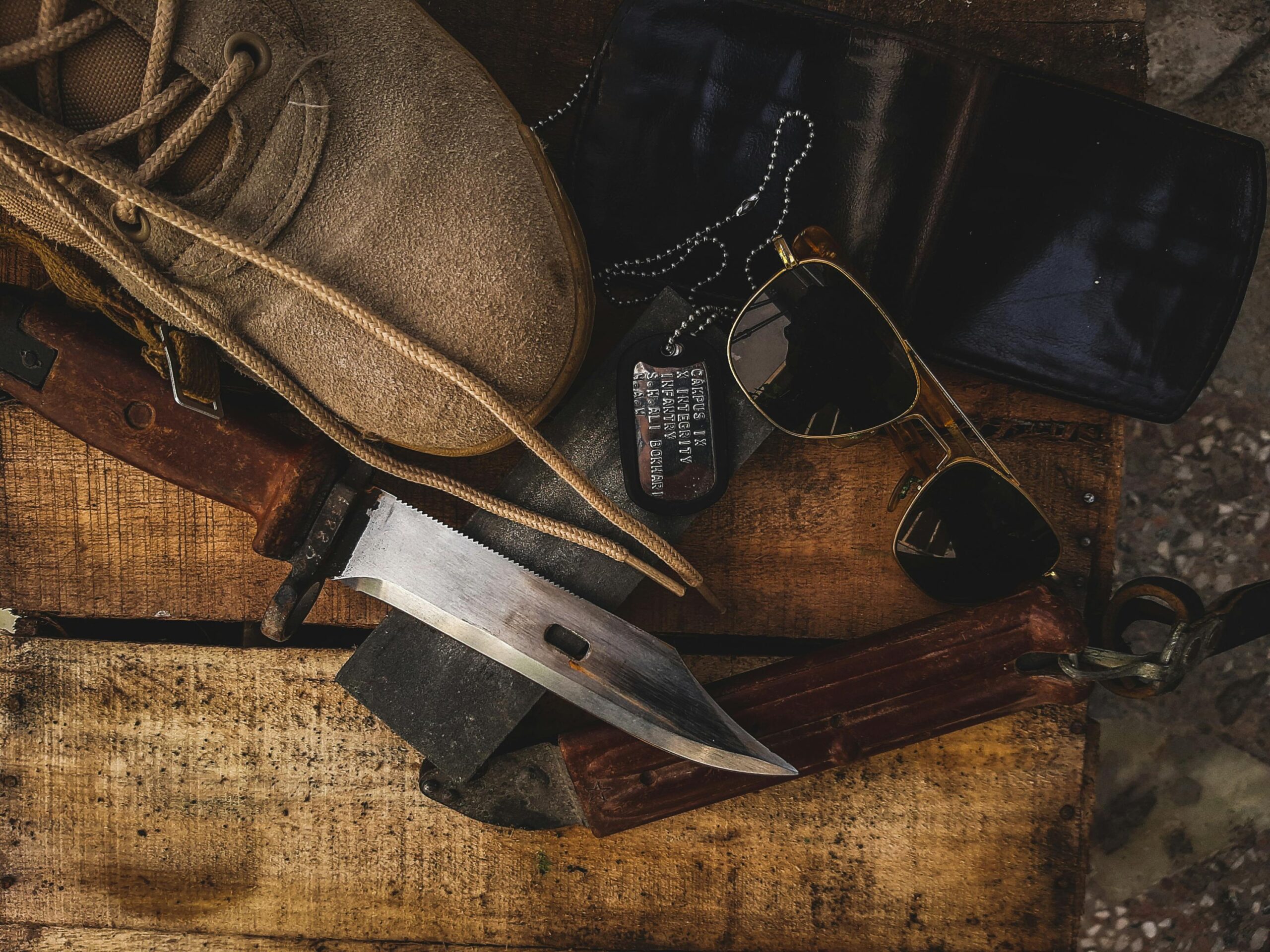
2. Folding Hunting Knives
- Design: Blade folds into the handle; locking mechanism prevents accidental closure.
- Best For: Light tasks (cutting cord, small game prep) or as a backup tool.
- Blade Length: 2.5–4 inches.
- Why Choose: Compact and portable—great for new hunters or day trips.
3. Survival Hunting Knives
- Design: Multi-purpose with extra features (saw edges, fire starters, handle storage).
- Best For: Emergency situations (shelter building, fire starting) + hunting.
- Blade Length: Longer and thicker (varies by model).
- Why Choose: Blends hunting utility with backcountry preparedness.
4. Skinning Knives
- Design: Curved, narrow blade with a thin tip; some include a gut hook (notch for clean belly openings).
- Best For: Removing hides without damaging meat.
- Blade Length: 3–4 inches.
- Why Choose: Precision-focused—reduces waste and speeds up skinning.
5. Caping Knives
- Design: Small, ultra-sharp blade for delicate work.
- Best For: Trimming trophy details (e.g., preserving deer ears, faces) without tearing fur.
- Blade length: 2–3 inches
- Why Choose: Essential for hunters who mount trophies.
6. Damascus Hunting Knives
- Design: Layered steel with decorative wavy patterns; full tang construction.
- Best For: Aesthetic appeal + versatile hunting tasks (skinning, butchering).
- Blade Length: 3–6 inches.
- Why Choose: Durable, holds an edge, and doubles as a collectible.
Buy Wholesale Knives and Start Scaling up with Us Today
Contact us and connect with a sales rep to get a free quote.
How to Choose the Right Hunting Knife
- Match the Task:
- Large game/heavy work → Fixed-blade (e.g., Bowie).
- Skinning → Skinning knife with a gut hook.
- Trophies → Caping knife.
- Portability → Folding knife.
- Consider Game Size:
- Small game (rabbits, birds) → Light folding or caping knife.
- Large game (deer, elk) → Sturdy fixed-blade.
- Prioritize Grip & Safety:
Choose a non-slip handle (rubber/textured plastic) for wet/bloody conditions. - Blade Material:
- Wet environments → Stainless steel (rust-resistant).
- Heavy use → Carbon steel (sharpness retention).
Conclusion
Choosing the right hunting knife depends on the job you need to do and the game you plan to clean. A quality hunting knife is a smart investment, whether you sell to beginners or seasoned hunters. You can find more details about features, benefits, and blade materials in this guide to hunting knives.
Hunters value knives that are easy to clean, strong, and comfortable for long use in the wild. This helps them stay safe and work fast. For sellers who want to source from China, you can easily request a quote to get started with wholesale or OEM knife options. This step can help grow your product range and meet your business needs.
Frequently Asked Questions
What blade shapes are best for hunting?
Drop points (versatile skinning), clip points (precision work), and gut hooks (clean belly openings) are most common.
How do I maintain a hunting knife?
Clean and dry after use to prevent rust. Sharpen regularly with a stone, oil carbon steel blades, and store in a dry sheath (avoid leather for long-term storage, as it traps moisture).
Can you explain the uses of a bowie knife in hunting scenarios?
A Bowie knife is large, usually featuring a clip point blade that’s 6 to 12 inches long. It is great for heavy duty cutting, such as splitting through bone or chopping branches for camp. Its length and weight make it less precise for skinning, but helpful for tackling tough jobs.
How do you choose the right hunting knife for skinning game?
When skinning game, choose a knife with a wide, curved blade. This design helps you cut close to the skin without damaging meat. Look for a handle that gives you a strong grip, especially if your hands get wet or slippery during use.
Knives with gut hooks or drop point blades are often recommended, as they allow for fast and precise cuts. Blade lengths between 3 and 5 inches are ideal for most tasks.
